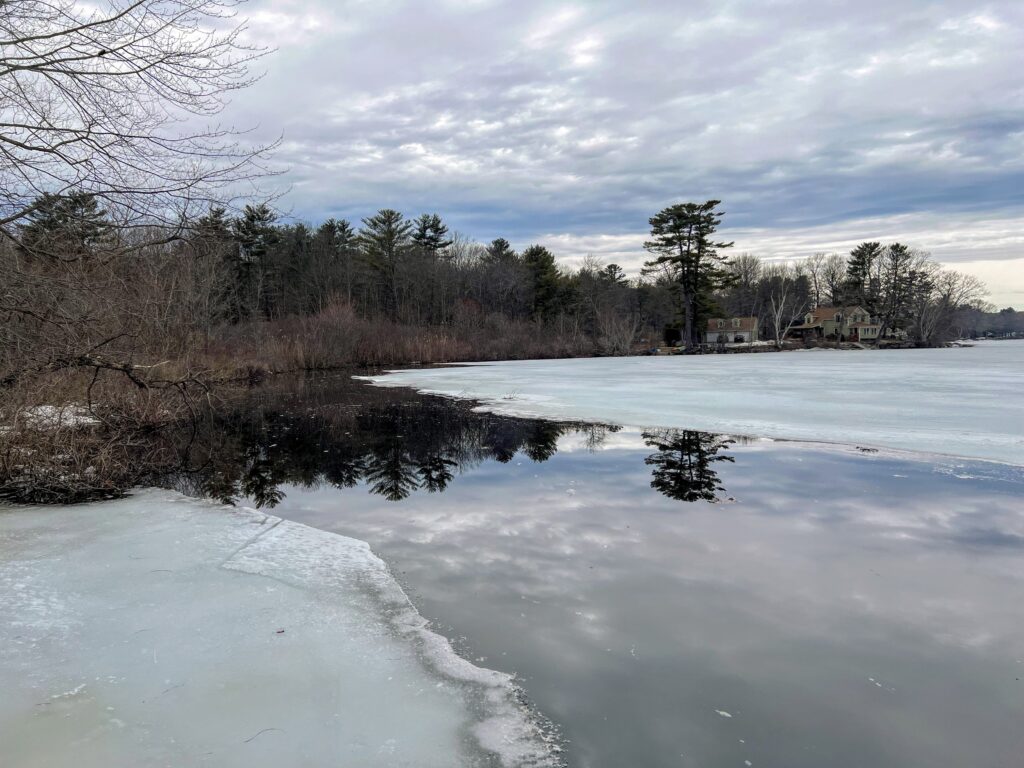By Woody Trask
On April 13 of this year, The Sun Journal published an article detailing the relationship between ice cover on Lake Auburn and water quality. This scenario applies equally to Taylor Pond. The less time a body of water is covered with ice, the longer the time for sunlight and warmth to stimulate algae growth and degrade water quality. Unfortunately, the effects of global warming have been reducing the duration of beneficial ice cover.

Ice melts from the shore, April 4, 2022.
“Ice-out” dates for Taylor Pond have been recorded since 1969. In 2018, recognizing the importance of having “ice-in” data as well, we started recording the date, although it’s sometimes hard to pinpoint exactly . We can now calculate the total number of days that the pond is iced in and therefore less supportive of algae growth, however, we don’t have much historical data. We are responsible for reporting both dates to the Lake Stewards of Maine (www.lakestewardsofmaine.org) for compilation with data from ponds and lakes all over the state.
The average “ice-out” date for Taylor Pond since 1969 is April 14th. The records reveal that recently ice-out has been occurring earlier, with April 11th being the average for the last 15 years. The average “ice-in” date since 2018 is December 24th. However, there were two years – 2016 and 2021 – when total ice-in didn’t occur until well into January making for very short periods of total ice cover.
In the short time that ice-in has been recorded, the average number of days that the pond is totally covered with ice is 110 days – the shortest being 83 days and the longest 137 days. This year we had 104 days of ice cover, which looks good compared to the 70 days reported in the Sun Journal for Lake Auburn. To take a quote from the paper, “the less time the lake is covered in ice, the more likely the lake will have problems later in the year.” We hope that 104 days translates into another good year for Taylor Pond.